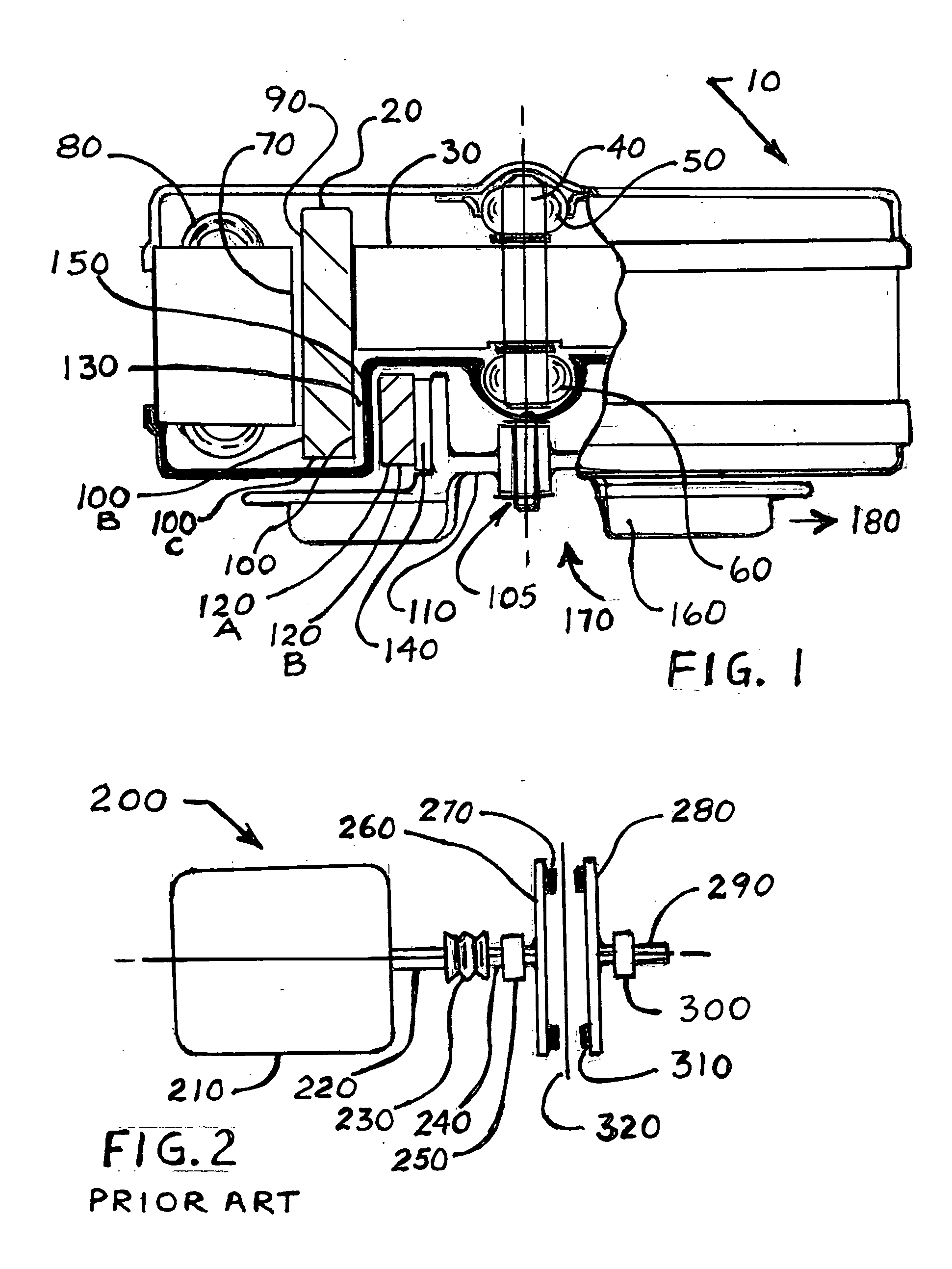Magnetic coupling using magnets on a motor rotor
- Summary
- Abstract
- Description
- Claims
- Application Information
AI Technical Summary
Benefits of technology
Problems solved by technology
Method used
Image
Examples
Embodiment Construction
[0035]FIG. 1 illustrates one possible embodiment of the present invention 10 using an electric motor's permanent magnets 20 mounted in a cylindrical fashion on the motor rotor 30 having a shaft 40 that is journalled on bearings 50 and 60. The permanent magnets 20 could be a solid cylindrical ring, but is more often made up from semi-cylindrical magnet segments into a cylindrical ring, and will be described as segments 20.
[0036] These magnet segments 20 are co-acting with the motor's stator-face 70 to produce torque when the stator's windings 80 are energized. The stator-face 70 is substantially cylindrical. The magnet segments 20 has a semi-cylindrical face 90 facing the stator-face 70 and also has a semi-cylindrical inside face 100. This magnet face 100 and its magnetic flux is in this embodiment used for coupling to a second rotor.
[0037] In alternate embodiments of the present invention the magnet segment face 100 B which is an outside semi-cylindrical face, and 100 C which is a...
PUM
 Login to View More
Login to View More Abstract
Description
Claims
Application Information
 Login to View More
Login to View More - R&D
- Intellectual Property
- Life Sciences
- Materials
- Tech Scout
- Unparalleled Data Quality
- Higher Quality Content
- 60% Fewer Hallucinations
Browse by: Latest US Patents, China's latest patents, Technical Efficacy Thesaurus, Application Domain, Technology Topic, Popular Technical Reports.
© 2025 PatSnap. All rights reserved.Legal|Privacy policy|Modern Slavery Act Transparency Statement|Sitemap|About US| Contact US: help@patsnap.com


